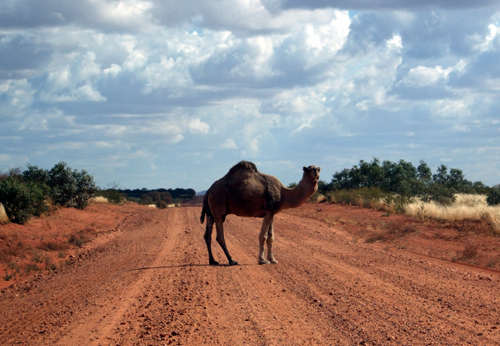
Thousands of camels in Central Australia have been killed by Government contractors shooting them from helicopters. The cull comes as concern grows over the danger the feral beasts pose to motorists on remote roads … particularly grey nomads. More than 500 of the estimated 5,200 culled camels were shot near the Lasseter Highway, the main road into Uluru.
“We knew there were a lot around,” said the owner of the Curtin Springs Station, Lyndee Severin. “But to be able to find 500 in a two-day period right on the main road, or very close to the main road … that just was mind-blowing.”
A few months ago a man was badly injured when his vehicle ran into a herd of camels on the Lasseter. After that incident, police warned grey nomads again of the very real danger of hitting wandering stock or large animals, especially at night. There are an average 2.17 camel-related crashes annually in the Northern Territory alone … many of them serious. Camels also create another major hazard for vehicles by taking dust baths on the road, piling heaps of soft sand on an otherwise smooth surface.
Despite a general consensus that action needs to be taken to reduce camel numbers … which are estimated to be growing at 10% a year … the way the cull has been carried out has been questioned.
Ian Conway from Kings Creek Station says camel carcasses have been left to rot.
“We’ve been along and seen where camels have kicked for 20 minutes, half an hour, a couple of hours in some instances, still alive,” he said. “All that did was increase the population of dingoes around Docker River and blowflies … and the stench around the country was unbelievable.”
If the camels had been taken to an abattoir for meat rather than left on the ground, it is estimated they could have generated more than $1 million in sales.
There are thought to be about one million feral camels in Australia … and recent rains have caused another huge spike in numbers. They cause massive damage to waterholes and native plants. The creatures were brought here between 1840 and 1907 to help develop arid areas.